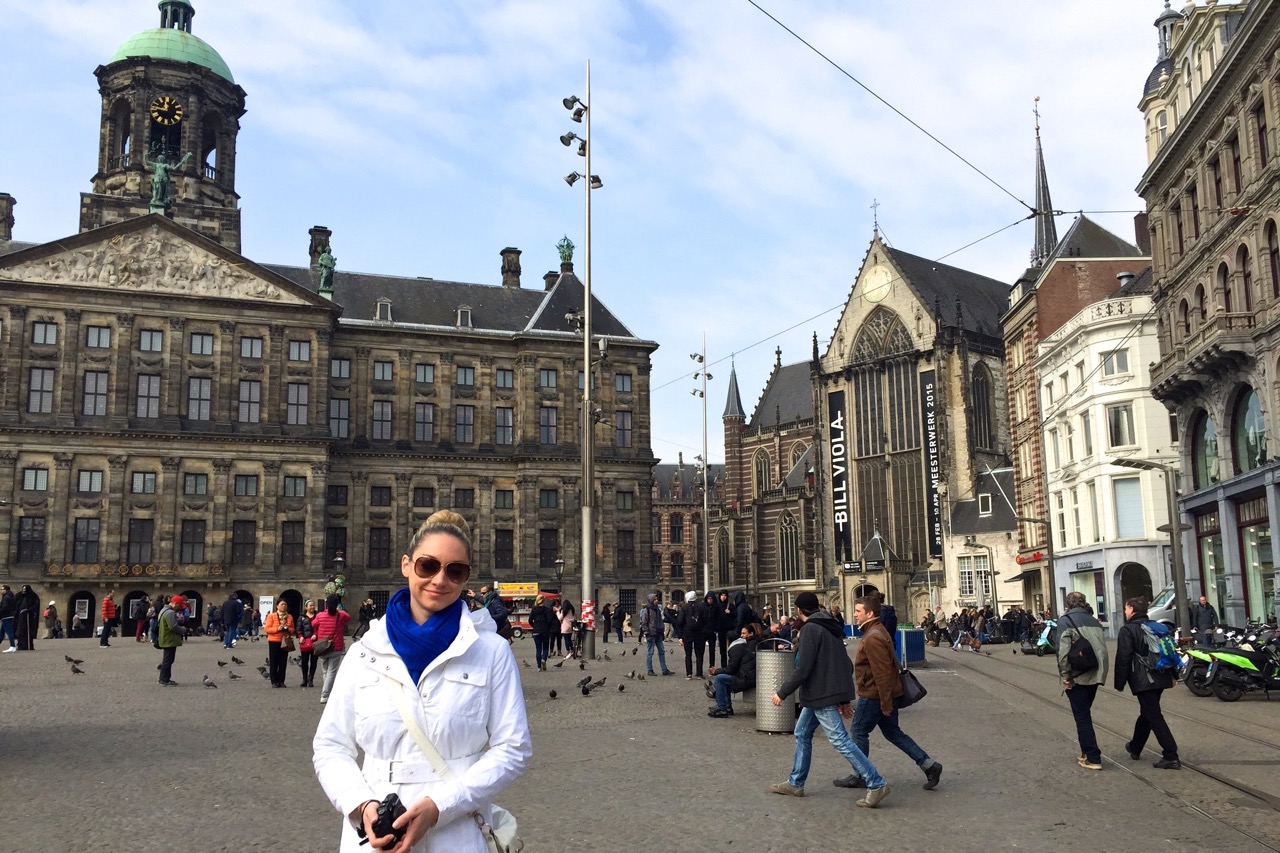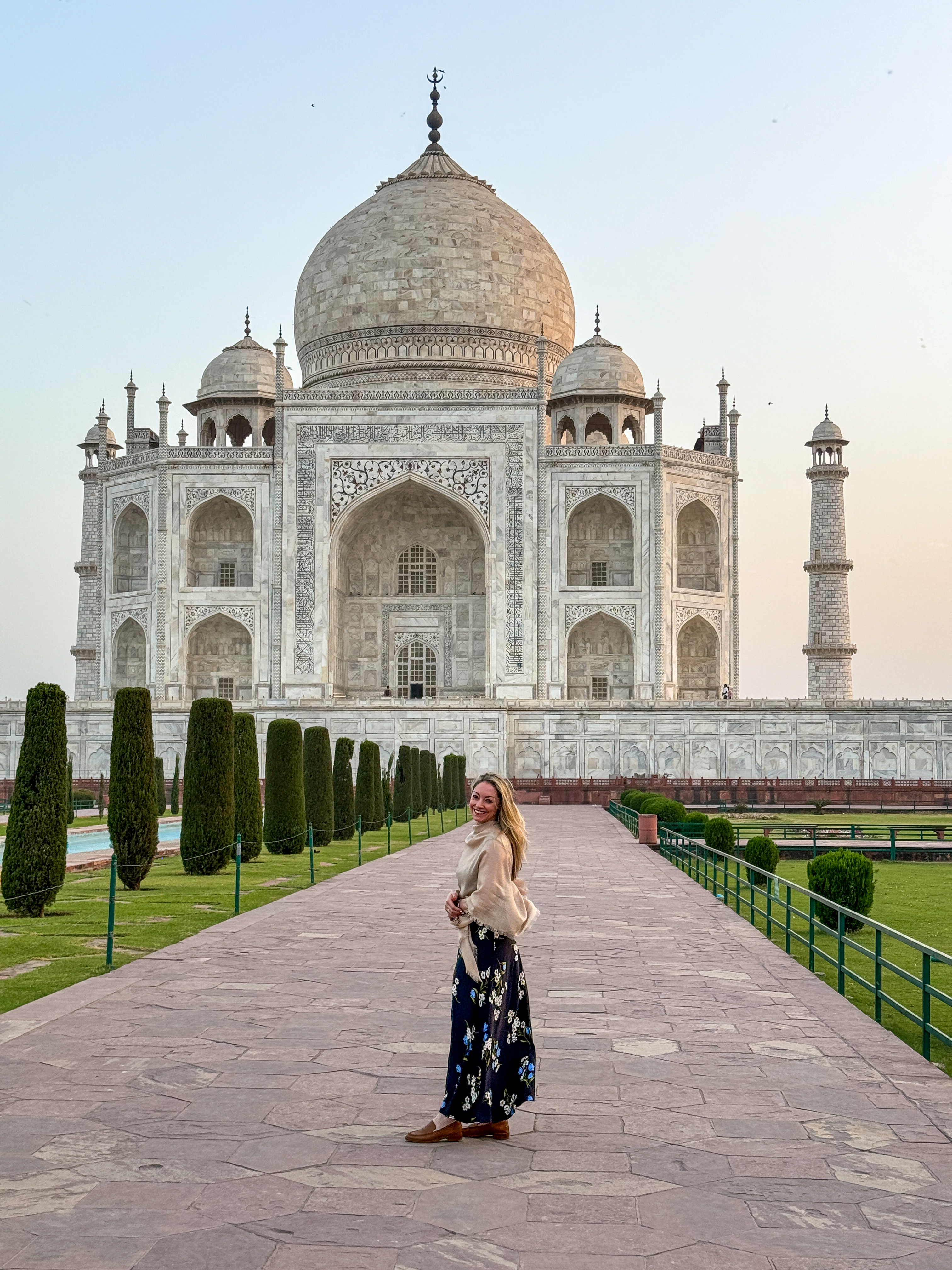Travel Log: Amsterdam, Netherlands
I already shared two outfits that I wore during our recent visit to Amsterdam (first outfit here and second outfit here), and today I want to share a travel log with some of the sights we were able to see during our few days in this exciting, diverse, and walkable city. I loved the mix of cultures and food; you can really tell that the city recognizes and promotes diversity. Amsterdam started out as a fishing village and grew to become one of the world's most important ports in the 17th century. Because the city is located two meters below sea level, an extensive network of canals was built for water management and defense. These canals are now iconic, and the Canal District was added to the UNESCO World Heritage List in 2010. There are four main canals that ripple outward: the Singel (the first canal that served as a moat around the medieval city), the Herengracht (Patricians' Canal or Lord's Canal), Keizersgracht (Emperor's Canal), and Prinsengracht (Prince's Canal). We were able to cross back and forth over the canals as we explored Amsterdam during our three days in the city. Please read on for photos and more information on Amsterdam's sights.
The building behind me is the Royal Palace, located in Dam Square (De Dam) in the center of Amsterdam. The Royal Palace was originally built as the City Hall, and is now used for royal events as well as open most days for tourists.
There are many beautiful and photogenic spots along the canals. This photo was taken looking at the back of the Bloemenmarkt, the world's only floating flower market. I purchased some tulip bulbs here to take home as a gift for my mom - they had every possible color to choose from.
I was amazed at how people squeezed their cars into parking spaces next to the canals - especially given the fact that there is no barrier. There is an increasing number of electric cars, and charging stations to support. This vintage Beetle looked especially cute parked along the canal.
According to the iAmsterdam site, there are over 800,000 bikes in the city and 63% of the population uses their bikes regularly for transportation. You can see bikes everywhere, stacked against every possible bike rack and railing like the ones above.
More bicycles in De Dam, the large square where the Grand Palace is located. If you look closely, you can see me at the end of the line.
The Begijnhof is a well-preserved courtyard that dates back to Medieval Amsterdam (think 5th-15th century). Because of its age, the Begijnhof is located within the innermost canal (the Singel) and a meter below the rest of the city. The Begijnhof was inhabited by beguines, religious women who took care of the poor (similar to nuns, but without as strict of rules).
The Begijnhof is a well-preserved courtyard that dates back to Medieval Amsterdam (think 5th-15th century). Because of its age, the Begijnhof is located within the innermost canal (the Singel) and a meter below the rest of the city. The Begijnhof was inhabited by beguines, religious women who took care of the poor (similar to nuns, but without as strict of rules).
There is a wide variety of houseboats in Amsterdam - these were located along one of the outer canals. Houseboats can cost as much as a townhouse these days in Amsterdam, because purchasing a houseboat includes paying for the lifetime moorage fee. The city is no longer issuing any new moorage permits due to space.
I really liked how some houseboat owners in Amsterdam chose modern home design with wood and glass, like the houseboat on the left. Each houseboat was unique, and it was so much fun to see how each owner chose to personalize their home.
The Rijksmuseum was a must-stop during our visit to Amsterdam. This national museum dedicated to art and history of the Netherlands holds about one million precious pieces of Dutch art like Rembrandt's "Night Watch," Johannes Vermeer's "The Milkmaid," and Frans Hals "Portait of a Young Couple." Now through May, the Rijksmuseum has a special exhibit with over one hundred pieces of Rembrandt's late works.
The Rijksmuseum was a must-stop during our visit to Amsterdam. This national museum dedicated to art and history of the Netherlands holds about one million precious pieces of Dutch art like Rembrandt's "Night Watch," Johannes Vermeer's "The Milkmaid," and Frans Hals "Portait of a Young Couple." Now through May, the Rijksmuseum has a special exhibit with over one hundred pieces of Rembrandt's late works.
In addition to the larger canal bridges used by cars and cyclists, there are also smaller pedestrian bridges in Amsterdam like this one. It was so pretty, I had to take a photo!
A canal cruise is a great way to learn about the history of Amsterdam's waterways and buildings. A canal tour with one of four companies was included with our iAmsterdam cards, so of course we took advantage of that.
Interesting fact about the former warehouse buildings in Amsterdam: they were built intentionally at an angle. The buildings are tilted forward in order to keep the windows and front facings from being damaged when goods were lifted by pulleys to the upper floors. You can really see the gap between buildings in the photo above.
The public transportation system in Amsterdam is efficient and easy to use. Trams like this cross the city and can be a great option if you get tired of walking. Our iAmsterdam cards also included unlimited access to public transportation (have I made a good case to purchase an iAmsterdam card yet?).
Our last evening in Amsterdam, we enjoyed an Indonesian rijsttafel at one of the many Indonesian restaurants. Rijsttafel means "rice table," and is popular in the Netherlands because of the former Dutch colony in what is now Indonesia. A rijssttafel is comprised of many small dishes accompanied by several types of rice. We love this type of meal, because it gives the ability to try many different flavors!
I hope you enjoyed this travel log on Amsterdam, and if you are thinking about visiting this vibrant city I absolutely recommend it! Thank you for visiting my blog today, and I hope you have a great rest of your week.
Linking up with Happiness at Mid-Life, Mix & Match Fashion, & Style Elixir.
I hope you enjoyed this travel log on Amsterdam, and if you are thinking about visiting this vibrant city I absolutely recommend it! Thank you for visiting my blog today, and I hope you have a great rest of your week.
Linking up with Happiness at Mid-Life, Mix & Match Fashion, & Style Elixir.

















Comments
Post a Comment
Thank you for stopping by my little corner of the blogging world. Positive comments are always appreciated and I look forward to hearing from you!